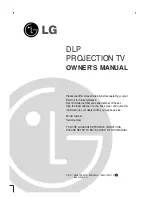
Functions
2.7 Teleprotection for Distance Protection (optional)
SIPROTEC, 7SD5, Manual
C53000-G1176-C169-5, Release date 02.2011
213
The following modes are possible with digital transmission using the protection data interface:
PUTT (Z1B)
Permissive Underreach Transfer Trip with Zone Acceleration Z1B (PUTT)
via protection interface,
POTT
Permissive Overreach Transfer Trip (POTT),
Dir.Comp.Pickup
Directional comparison pickup,
The send and receive signals must in these cases be assigned to fast command channels of the protection
data interface (DIGSI matrix).
Distance Protection Prerequisites
For all applications of teleprotection schemes it must be ensured that the fault detection of the distance protec-
tion in the reverse direction has a greater reach than the overreaching zone of the opposite line end (refer to
the shaded areas in Figure 2-103 on the right hand side)! This is normally predefined for the U/
I
/
ϕ
pickup since
the local voltage of a reverse fault is smaller than the voltage of the remote supplying end. For impedance
pickup at least one of the distance stages must be set to
Reverse
or
Non-Directional
. During a fault in the
shaded area (in the left section of the picture), this fault would be in zone Z1B of the protection at B as zone
Z1B is set incorrectly. The distance protection at A would not pick up and therefore interpret this as a fault with
single end infeed from B (echo from A or no block signal at A). This would result in a false trip!
The blocking scheme needs furthermore a fast reverse stage to generate the blocking signal. Apply zone 3 with
non-delayed setting to this end.
Figure 2-103
Distance protection setting with permissive overreach schemes
Time Settings
The send signal prolongation
Send Prolong.
(address
2103
) must ensure that the send signal reliably
reaches the opposite line end, even if there is very fast tripping at the sending line end and/or the signal trans-
mission time is relatively long. In the case of the permissive overreaching schemes
POTT
,
Dir.Comp.Pickup
and
UNBLOCKING
this signal prolongation time is only effective if the device has already issued a trip command.
This ensures the release of the other line ends even if the short-circuit has been cleared very rapidly by the
independent zone Z1. In the case of the blocking scheme
BLOCKING
, the transmit signal is always prolonged
by this time. In this case, it corresponds to a transient blocking following a reverse fault. This parameter can
only be changed in DIGSI at
Display Additional Settings
.
If the permissive release scheme
UNBLOCKING
is used, steady-state line faults can be detected. The output of
such a fault can be delayed with the monitoring time
Delay for alarm
(address
2107
). This parameter can
only be set in DIGSI at
Display Additional Settings
.
With the release delay
Release Delay
(address
2108
) the release of the zone Z1B can be delayed. This is
only required for the blocking scheme
BLOCKING
to allow sufficient transmission time for the blocking signal
during external faults. This delay
only
has an effect on the receive circuit of the teleprotection scheme; con-
versely the release signal is not delayed by the set time delay T1B of the overreaching zone Z1B. For
Pilot
wire comp
and
Rev. Interlock
T1B must be delayed so that there is enough time between the pickup of
the distance protection function and the trip signal of zone Z1B.















































